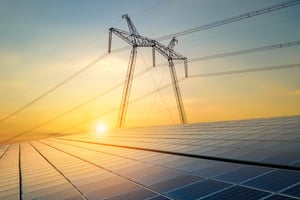Berkeley Lab's recent study, "Empirical Estimates of Transmission Value using Locational Marginal...
The Growing Demand for Lithium-ion Batteries: Implications for Renewable Energy
Renewable energy sources, such as solar and wind power, have gained immense popularity recently due to their environmental benefits and the global push for clean energy solutions. However, the success of renewable energy integration hinges on effective energy storage solutions, primarily lithium-ion batteries. In this blog, we delve into the surge in demand for lithium-ion batteries and its profound implications for the renewable energy sector, particularly in the context of the Inflation Reduction Act (IRA) and its production incentives.
The Lithium-ion Battery Boom
Lithium-ion batteries have emerged as the go-to energy storage solution for renewable energy systems. Their lightweight, high energy density and ability to store electricity efficiently have made them indispensable for capturing and utilizing intermittent renewable energy sources. According to recent data, the demand for lithium-ion batteries is set to experience a remarkable surge.
Global Demand: The unprecedented investment in solar energy, driven by the IRA's production incentives and other global factors, is expected to surge global demand for lithium-ion batteries. From roughly 670 GWh in 2022, the total market for batteries across all applications, including solar and electric vehicles, is projected to exceed 4,000 GWh by 2030.
U.S. Demand: The United States is not immune to this trend. U.S. demand for battery energy storage systems (BESS) is anticipated to increase over six-fold, soaring from 18 GWh in 2022 to a staggering 119 GWh by 2030. Despite this surge, the current U.S. manufacturing capacity for all lithium-ion battery applications is just 60 GWh.
The growing demand for lithium-ion batteries carries several significant implications for the renewable energy sector:
- Enhanced Renewable Energy Integration: As the backbone of energy storage for renewable sources, lithium-ion batteries enable better integration of solar and wind power into the grid. They store excess energy generated during high renewable energy production periods and release it when demand peaks or renewable energy generation is low.
- Grid Reliability and Stability: Reliable energy storage systems powered by lithium-ion batteries contribute to grid stability by mitigating the intermittent nature of renewable energy sources. This reliability reduces the risk of power outages and enhances overall grid performance.
- Decarbonization Acceleration: The surge in lithium-ion battery demand aligns with global goals to reduce carbon emissions. By enabling more efficient use of renewable energy, these batteries play a crucial role in transitioning to a cleaner and more sustainable energy mix.
- Economic Opportunities: The growth in battery production also brings financial opportunities, including job creation and potential investments in the clean energy sector. As demand for lithium-ion batteries continues to rise, it stimulates innovation and drives down costs.
Conclusion
The future of renewable energy is intricately linked with the surge in demand for lithium-ion batteries. The IRA's production incentives and the broader global shift toward clean energy solutions have set the stage for a significant battery manufacturing and deployment expansion. Lithium-ion batteries will continue to play a pivotal role in maximizing the utilization of renewable energy sources, improving grid reliability, and accelerating the decarbonization of the energy sector.
As the United States and the world invest in the energy storage infrastructure needed to support renewable energy growth, it is clear that lithium-ion batteries are at the forefront of this transformative journey. The path to a more sustainable and resilient energy future relies on our ability to meet the surging demand for these essential components of the clean energy transition.


